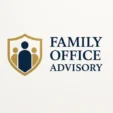Philanthropy Services & Foundation Governance #
Philanthropy services support families in defining, structuring, and executing their charitable vision. Family offices often coordinate giving strategies, manage foundations, ensure compliance with regulatory requirements, and maintain long-term governance frameworks that reflect the family’s values. Professionalized philanthropic governance enhances impact, transparency, and multi-generational engagement.
Context & Importance #
UHNW families increasingly integrate philanthropy into broader wealth planning, legacy strategy, and family governance. Effective philanthropic structures—such as private foundations, charitable trusts, or donor-advised funds—require clear purpose, governance mechanisms, and oversight. Family members may participate in boards, grant committees, or impact initiatives, making governance essential for transparency and alignment.
Core Components of Philanthropy Services #
- Strategic philanthropy: Defining mission, focus areas, objectives, and long-term impact themes.
- Foundation setup & structuring: Selecting the appropriate legal vehicle (foundation, trust, donor-advised fund).
- Governance frameworks: Board composition, voting rights, grant approval policies, and compliance controls.
- Grantmaking processes: Due diligence on grantees, impact measurement, and reporting.
- Regulatory compliance: Accounting, tax filings, charitable status requirements, and cross-border rules.
- Family engagement: Involving next generations through education, advisory roles, and values alignment.
- Impact evaluation: Tracking outcomes through metrics, dashboards, or third-party assessments.
Common Philanthropic Structures #
- Private foundations: Family-controlled entities with a formal board, long-term mandate, and structured grantmaking.
- Charitable trusts: Flexible vehicles offering tax-efficient giving and tailored distribution rules.
- Donor-advised funds (DAFs): Low-administration alternatives to foundations, managed through qualified institutions.
- Corporate foundations: For families with ongoing operating companies, linking business purpose to societal impact.
Foundation Governance #
Governance ensures accountability, mission alignment, and long-term continuity. A well-structured framework covers decision rights, conflicts of interest, succession, and reporting obligations. Clear governance helps avoid mission drift, unclear grantmaking, and regulatory issues.
- Board composition: Mix of family members and independent experts.
- Policies & charters: Mission statement, grantmaking policy, investment policy for foundation assets.
- Compliance procedures: Anti-money-laundering controls, reporting, tax filings, audit requirements.
- Succession planning: Preparing next generations for governance roles.
Implementation & Best Practices #
- Define mission and priorities clearly: Align with family values and long-term goals.
- Start with a governance blueprint: Set rules for voting, meetings, and grant approvals.
- Conduct grantee due diligence: Evaluate financial health, governance, and impact history.
- Use multi-year commitments: Provide predictable funding for high-impact organizations.
- Integrate impact measurement: Use evidence-based frameworks for evaluating outcomes.
- Document everything: Maintain clear records for grants, compliance, board minutes, and evaluations.
Common Challenges #
- Mission drift due to unclear goals or inconsistent decision-making.
- Overreliance on personal preferences rather than structured evaluation.
- Regulatory complexity for cross-border giving.
- Insufficient impact measurement or reporting systems.
- Low family engagement or unclear succession plans.




